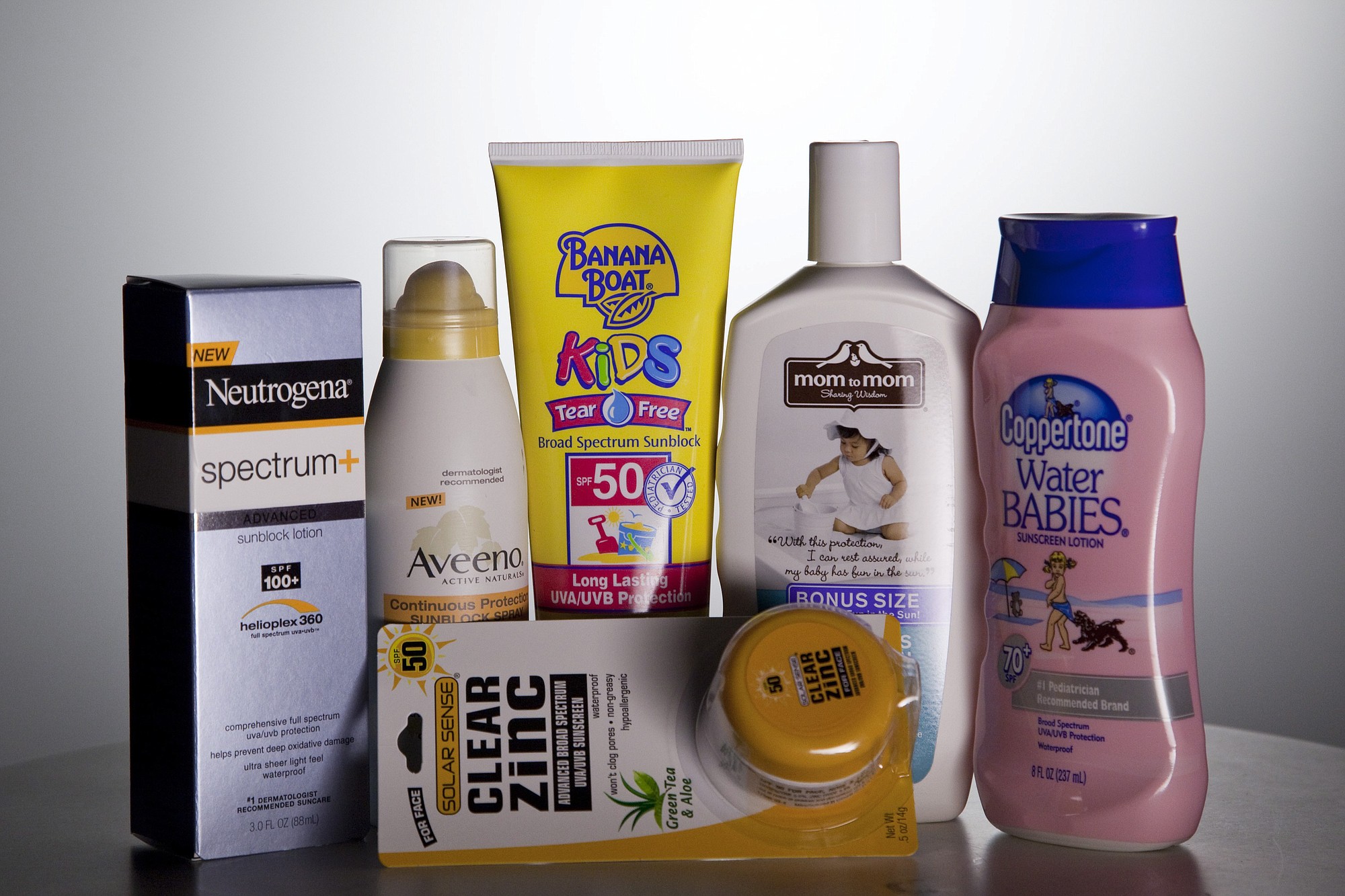Walking down the sunscreen aisle can be intimidating.
Sunscreen bottles advertise a range of protection, from SPF 15 to SPF 100. Some sunscreens are aimed at children, others are specifically for use on the face. There are sunscreen creams and sprays and gels and wax sticks. And there are dozens of brands offering some or all of the varieties.
“People can be paralyzed by the choices,” said Dr. Craig Hersh, a dermatologist at Kaiser Permanente.
Hersh points to the recommendations from the American Academy of Dermatology when it comes to selecting the right sunscreen. The academy recommends using a sunscreen that offers broad-spectrum protection (protects against UVA and UVB rays), SPF 30 or greater and water resistance.
Sun protection factor
Sunscreen with an SPF, or sun protection factor, of 30 will block 97 percent of the sun’s rays. Higher SPFs offer slightly more protection — fractions of percentage points — but nothing can block 100 percent of rays.
For those reasons, SPF 30 sunscreen is usually sufficient, Hersh said. “Anything higher than that doesn’t really add anything,” he said.
Regardless of the SPF, sunscreen should be reapplied every two hours or immediately after swimming or sweating, Hersh said. An adequate amount of sunscreen is about 1 ounce — the size of a shot glass — for the body and one tablespoon for the face, he said.
Sunscreen should be applied about 15-20 minutes before going outside, Hersh said.
Broad-spectrum protection
Sunlight consists of two types of ultraviolet light: UVA and UVB. Over-exposure to either can lead to skin cancer, according to the American Academy of Dermatology.
UVA rays are also responsible for premature skin aging, causing wrinkles and age spots. UVB rays are the primary cause of sunburns.
“The SPF only protects against UVB, but you also want sunscreen that protects against UVA,” Hersh said. “That’s what broad-spectrum means, it protects against all.”
Sunscreen for kids
Sunscreen should only be applied to children 6 months and older, said Jen Zielinski, a registered nurse in The Vancouver Clinic’s dermatology department. Infants younger than 6 months should be kept out of the sun because their skin is too sensitive for sunscreen or sun exposure, she said.
When it comes to choosing a sunscreen for kids, the American Academy of Dermatology has the same recommendations it offers for adults: broad spectrum, water resistant and SPF 30 or higher.
Some sunscreens formulated for children are tear-free and won’t sting eyes, which could be beneficial, Zielinski said. Dr. Benjamin Vazquez, a dermatologist at The Vancouver Clinic, often recommends parents use sunscreens with the ingredients zinc oxide or titanium dioxide for children. Those sunscreens are better tolerated by patients with sensitive skin, he said.
Sunscreen types
Sunscreen comes in several different forms: lotions, creams, waxes, sprays, gels and ointments.
Vazquez often recommends using spray sunscreens for the body, since they make it convenient to cover large areas of the body quickly and efficiently. For the face, Vazquez advises patients to consider their skin type.
“If you’re acne-prone or have oily skin, make sure to look for noncomedogenic (won’t clog pores) facial sunscreens,” Vazquez said.
But for Hersh, the type of sunscreen doesn’t matter so much as daily use.
“The best sunscreen is one you’ll use,” Hersh said. “It won’t do any good sitting in a bottle.”




